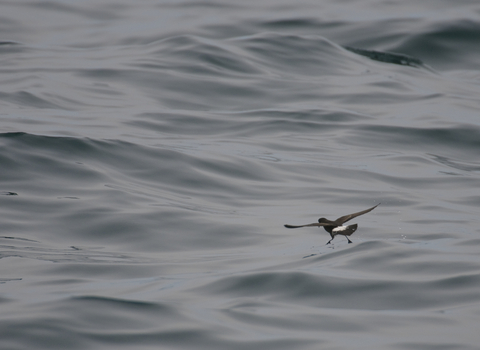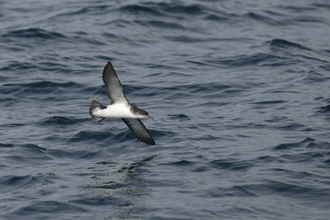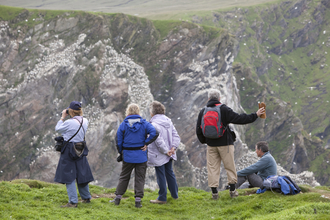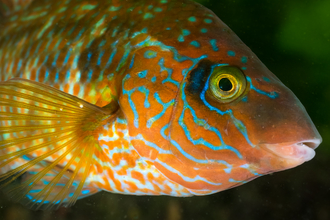
Storm petrel ©Chris Gomersall/2020VISION
Storm petrel ©Tom Hibbert
Storm Petrel
Our smallest breeding seabird, the storm petrel is barely larger than a house martin! They mostly nest among rocks or in burrows on small offshore islands.
Scientific name
Hydrobates pelagicusWhen to see
April to OctoberSpecies information
About
Storm petrels are impressive birds, the size of a songbird but with the lifestyle of an albatross! True seabirds, they spend most of their time out at sea and only return to land to breed. Nesting in burrows or rocky crevices, they are vulnerable to predation from mammals like rats, so are usually only found on small, offshore islands where these animals are absent. They sing from their burrows at night, a delightfully bizarre purring sound, mixed with occasional grunts and squeaks.Like other birds in their order (known as tubenoses), storm petrels have an excellent sense of smell, which helps them find food from great distances when flying over the open ocean. There is also evidence that they can recognise other individuals and even choose mates using their sense of smell. They do have a distinctive aroma - storm petrels give off a pleasant, musky scent that makes them a favourite amongst seabird ringers and scientists!
How to identify
A tiny, delicate-looking seabird, not much larger than a house martin, which its plumage slightly resembles. It has dark, brownish-black wings, body and head, with a broad white patch of white on the rump and a short, dark, square-ended tail. There is a distinctive white band on the underside of each wing, which helps separate this species from other similar storm petrels.When seen closely, the small bill has a distinctive ‘tube’ on top, giving it away as a member of the group of seabirds known as tubenoses, which includes albatrosses, shearwaters and the fulmar.
Distribution
Storm petrels nest on rocky islands around the western coasts of the UK and off the Northern Isles, with most found around Scotland, Wales and Northern Ireland. Away from breeding colonies, they are best looked for from prominent headlands in autumn, when there is a strong onshore wind blowing birds closer to land.Did you know?
Storm petrels typically feed by picking small fish, crustaceans and plankton from the surface of the sea. They seem to run across the water, their wings held up in a V-shape as their webbed feet patter on the surface. The scientific name, Hydrobates pelagicus, comes from Ancient Greek and roughly translates as ‘to step on water on the open sea’.How people can help
Storm petrels depend on healthy seas, so it is essential for their survival that we look after our oceans. The Wildlife Trusts are working towards a vision for Living Seas, where wildlife thrives alongside the sustainable use of our seas' resources.Show your love for the sea by supporting your local Wildlife Trust, reducing your plastic use and adding your voice to our campaign for Living Seas.



